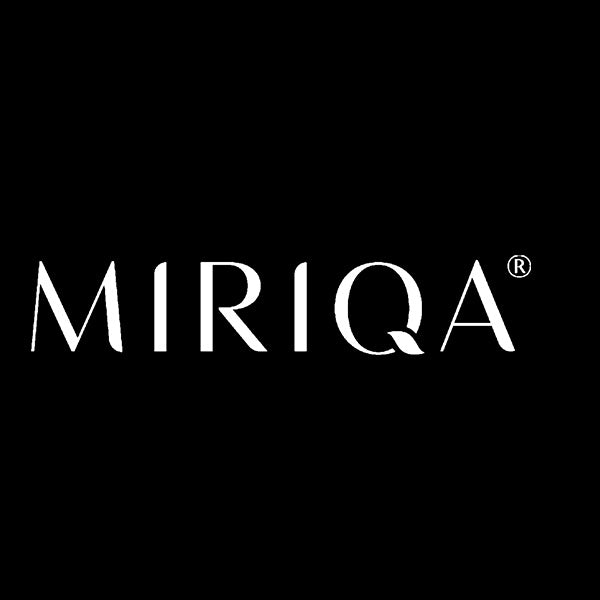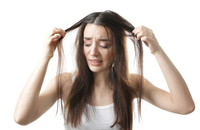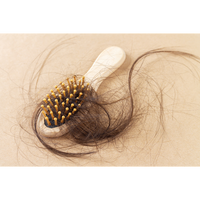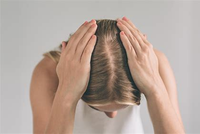What causes hair loss in men and what is the average age men start losing hair?

Contrary to what most people believe, men who suffer from male pattern baldness are not okay with the situation, with self-worth being adversely affected. Most men are extremely unhappy about the issue, feel helpless, find it hard to talk about and would be willing to try anything to change it. By age 20, about 20% of men will have at least some form of visible hair loss. Since the 20s is often a time for finding one’s direction in life and also for meeting people, hair loss can have a significant impact on one’s social life and confidence. And while some men feel comfortable shaving their heads and going completely bald, others have a harder time adjusting to this new reality.
What Is The Average Age Men Start Losing Hair?
Hair loss can start at almost any age as men enter adulthood. While most men experience some hair loss as they get older, male pattern baldness (androgenic alopecia) can start at any age. When and how much is lost depends primarily on genetics, although statistics show that the likelihood of hair loss only increases with age. By the time a man hits 50, there is a 50% chance of experiencing noticeable hair loss, which is why a head of thick hair is often associated with youth.


Causes Of Hair Loss
While the majority of hair loss in men is caused by hereditary factors, there are other non-hereditary causes for hair loss such as stress, nutritional deficiency and so forth. Hair loss caused by non-hereditary factors can happen at any age, and will usually persist until these external factors have been addressed.
1. DHT
Finasteride, a 5-alpha-reductase inhibitor, is the generic name for brand names such as Propecia. It is the first drug in history (and one of the very few to date) to effectively treat male pattern baldness in the vast majority of men. Finasteride’s effectiveness is largely due to its ability to specifically inhibit Type II 5-alpha-reductace, the enzyme that converts testosterone into a more potent androgen dihydrotestosterone (DHT). DHT shrinks or miniaturizes the hair follicle, which eventually leads to baldness. Propecia can effectively lower DHT when taken daily.
While Finasteride is highly effective in treating male pattern baldness, it can result in impotency, loss of interest in sex, breast enlargement, dizziness and other undesirable side effects which may continue even after a man discontinues finasteride.
2. Telogen Effluvium
Telogen effluvium (TE) is the second most common form of hair loss in men. Telogen effluvium is a form of temporary hair loss that usually happens with stress, poor diet, sudden weight loss or with the consumption of certain drugs such as antidepressants.
Large amounts of a person’s hair might fall out (shedding), but the good news is, it is often temporary and the hair usually grows back. It occurs more often in women and is usually triggered by a disturbance to the hair cycle.
The hair cycle typically has three phases:
- Anagen or growth phase.
- Catagen or transitional phase.
- Telogen or resting phase.
Telogen effluvium is associated with the telogen phase. Normally, 5 to 10 percent of a person’s hair is in the telogen phase at any one time.
With telogen effluvium, the anagen or growth phase slows down, meaning that fewer hairs enter the next two stages. With this condition, around 30 percent of hair follicles move into the telogen phase, which means that hair shedding occurs.
Many dermatologists believe chronic stress can gradually exert a negative effect on hair growth and lead to persistent TE. So, besides a good diet, the ability to stay happy and stress-free are also factors to ensuring a good crown of hair.
What Are The Treatment Options & Side Effects?
When considering treatment for your hair loss, it is important to understand just how far your hair loss has progressed. Treatment options for hair loss in men can include: –
- Prescription drugs such as Finasteride (Propecia)
- Prescription topical applications such as Minoxidil (Rogaine)
- Hair transplants
- Laser treatments
- Lifestyle changes such as dietary changes, exercise and stress alleviation
- Nutritional supplements such as Saw Palmetto, Vitamin E, Biotin, Keratin and Collagen to help provide a better nutritional balance for a healthy scalp and better hair growth.
The aforementioned hair treatments such as prescription drugs and hair transplants may yield faster and more drastic results. However, the question to ask yourself is: are you prepared for these drastic measures and are you willing to consider the side effects and possible repercussions of these treatments? If you are not ready for them, and your hair loss is still at an infancy stage, it may be a better option to consider nutritional supplements such as MiriqaTM Hair to retain and regrow some of the hair you have lost, especially since these 100% drug-free, MiriqaTM Hair supplements pose fewer health risks.

The general guide is: The earlier you do something about your hair loss, the greater the opportunity to preserve your hair.
You can start your hair growth journey with Miriqa today. Learn more here. Natural and convenient, Miriqa is the answer to eliminating hair loss and increasing hair growth. Learn more about how Miriqa Hair Supplements is a safe and effective solution for hair loss in men.





